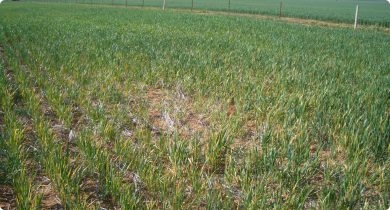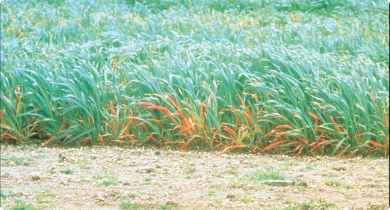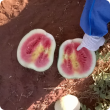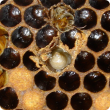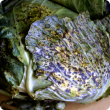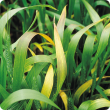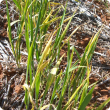Viruses & virus-like
There are many types of viruses, viroids, prions and syndromes that have the potential to affect animal and plant health in Western Australia. Viruses pose a serious risk for primary producers, as they can impact on market access and agricultural production.
Western Australia is free from some of the world's major agricultural and livestock diseases. Good biosecurity measures on your property are vital for preventing the spread of animal and plant diseases. Viruses can be spread by insect vectors. There are no pesticides that can be used to kill viruses, however they can be reduced and controlled by controlling these insect vectors with pesticides.
The Department of Primary Industries and Regional Development provides:
- biosecurity/quarantine measures at the WA border to prevent the entry of plant and animal diseases.
- post border biosecurity measures for harmful animal and plant diseases.
- advice on widespread diseases present in the state.
For advice on animal and plant diseases search our website, the Western Australian Organism List or contact our Pest and Disease Information Service (PaDIS).
For diagnostic services, please contact our Diagnostic Laboratory Services.
Filter by search
Filter by topic
- Crops (26) Apply Crops filter
- Grains (16) Apply Grains filter
- Horticulture (11) Apply Horticulture filter
- Biosecurity & quarantine (8) Apply Biosecurity & quarantine filter
- Vegetables (7) Apply Vegetables filter
- Biosecurity (7) Apply Biosecurity filter
- Plant biosecurity (7) Apply Plant biosecurity filter
- Canola (6) Apply Canola filter
- Wheat (5) Apply Wheat filter
- Crop diseases (5) Apply Crop diseases filter
- Pulses (4) Apply Pulses filter
- Grains research & development (4) Apply Grains research & development filter
- Nursery & cutflowers (3) Apply Nursery & cutflowers filter
- Tomatoes (3) Apply Tomatoes filter
- Lupins (3) Apply Lupins filter
- Potatoes (3) Apply Potatoes filter
- Fungi (3) Apply Fungi filter
- Fruit (3) Apply Fruit filter
- Field peas (3) Apply Field peas filter
- Oats (2) Apply Oats filter
- Pests (2) Apply Pests filter
- Stone fruit (2) Apply Stone fruit filter
- Nematodes (2) Apply Nematodes filter
- Quarantine (2) Apply Quarantine filter
- Importing to Western Australia (2) Apply Importing to Western Australia filter
- Mechanical, physical and cultural (2) Apply Mechanical, physical and cultural filter
- Bacteria (2) Apply Bacteria filter
- Barley (2) Apply Barley filter
- Control methods (2) Apply Control methods filter
- Capsicums and chillies (2) Apply Capsicums and chillies filter
- Grapes & wine (1) Apply Grapes & wine filter
- Fungicides (1) Apply Fungicides filter
- Importing miscellaneous (1) Apply Importing miscellaneous filter
- Minor fruits (1) Apply Minor fruits filter
- Pest insects (1) Apply Pest insects filter
- Crop weeds (1) Apply Crop weeds filter
- Livestock species (1) Apply Livestock species filter
- Livestock & animals (1) Apply Livestock & animals filter
- Carrots (1) Apply Carrots filter
- Broccoli (1) Apply Broccoli filter
- Bees (1) Apply Bees filter
- Beans (1) Apply Beans filter
- Brussels sprouts (1) Apply Brussels sprouts filter
- Cabbage (1) Apply Cabbage filter
- Chemicals (1) Apply Chemicals filter
- Cauliflower (1) Apply Cauliflower filter
- Chinese cabbage (1) Apply Chinese cabbage filter

